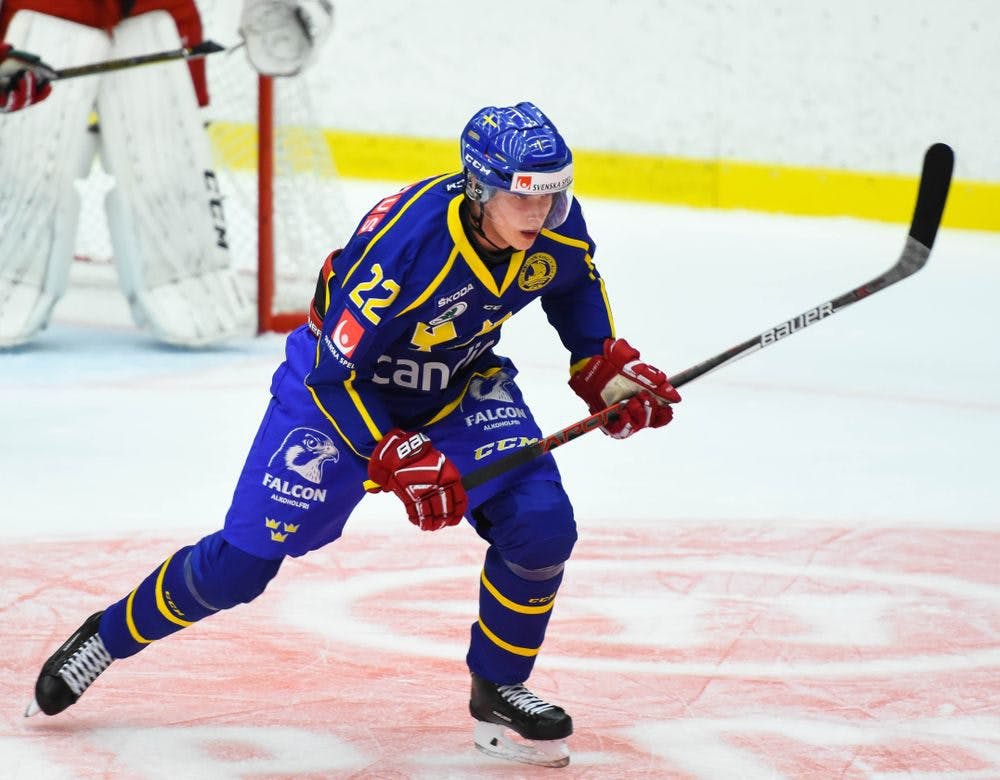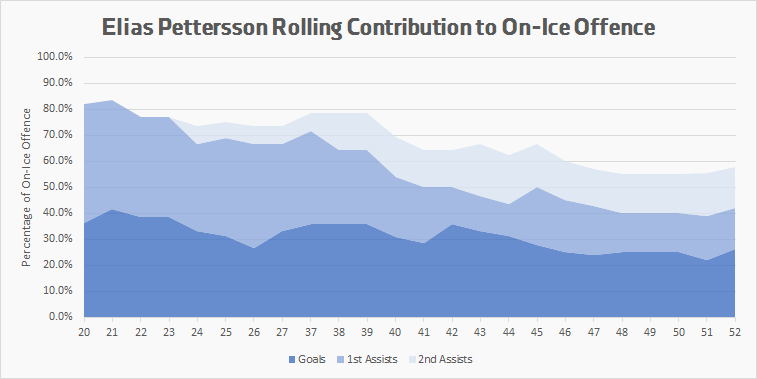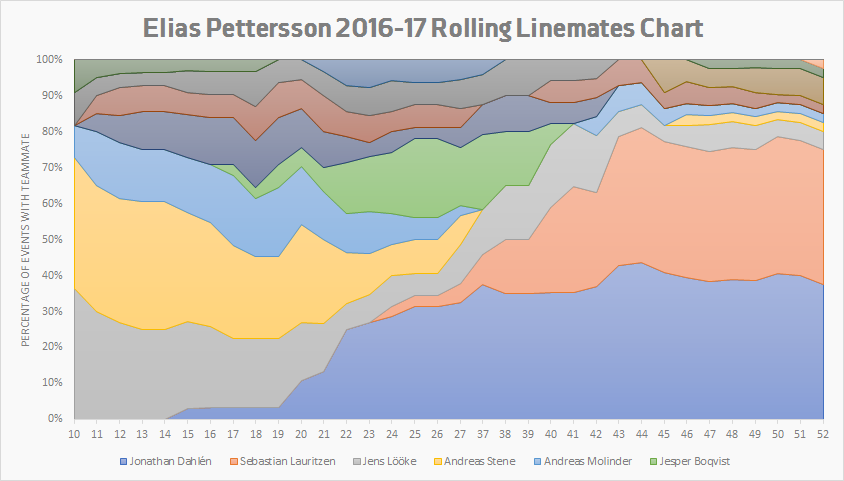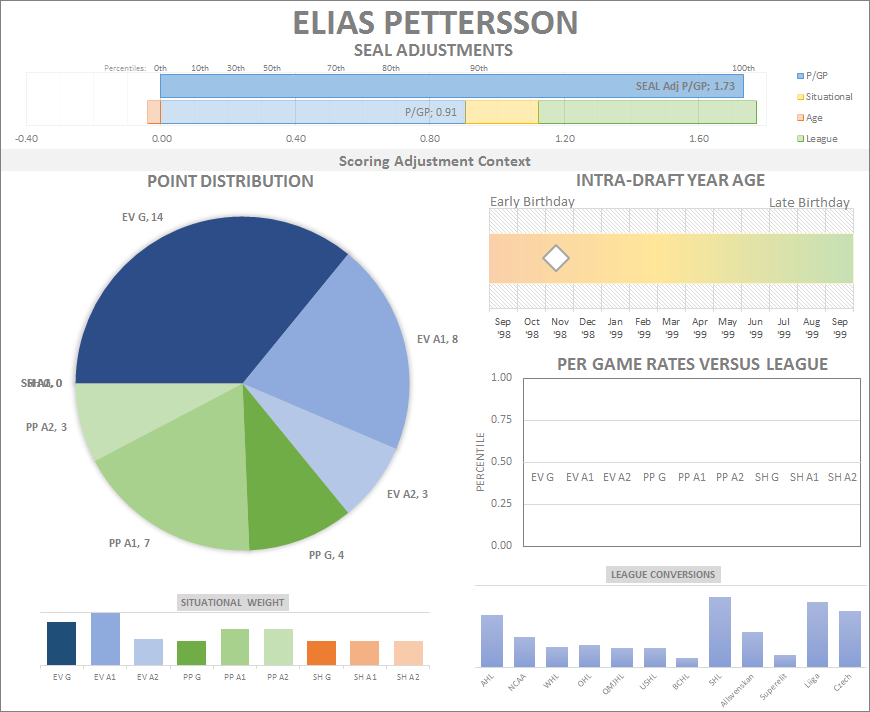Canucks Army 2017 Pre-Season Prospect Rankings #1: Elias Pettersson

By Jeremy Davis
6 years agoThe date has finally arrived, and at last, we get to reveal our pick for the top prospect in the Canucks’ prospect pool. Of course, most of the suspense has been removed, since we’ve covered all the other good prospects. Plus, it’s in the goddamn title. Elias Pettersson is number one.
The decision to put Pettersson above Brock Boeser was not an easy one, and not everyone will agree with it (certainly not ESPN or the Hockey News, who both had Pettersson as the Canucks third best prospect, which, I can’t even), but I do feel that it is at least a justifiable decision. Over the course of this article, I intend to explore why.
Qualifications
We’ve changed the qualifications up just a little bit this year. Being under the age of 25 is still mandatory (as of the coming September 15th), but instead of Calder Trophy rules, we’re just requiring players to have played less than 25 games in the NHL (essentially ignoring the Calder Trophy’s rule about playing more than six games in multiple seasons).
Graduates from this time last year include Brendan Gaunce, Troy Stecher, and Nikita Tryamkin, while Anton Rodin is simply too old now, and Jake Virtanen is not being considered solely as a result of his games played.
Scouting Report
Pettersson is a highly skilled player, with excellent skating, fantastic puck skills, and superb playmaking. But as his coach pointed out last year, his best asset is surely between his ears:
His former coach, Roger Forsberg, said, “his biggest gift is that he has an incredible understanding of the game. He sees the game from every angle and he is ahead of you all the time, so he always knows what to do with the puck. He finds solutions in the offensive zone that only he can see.” (h/t Pass it to Bulis)
As with virtually every Canucks prospect, I have already written plenty of words about Pettersson. The last big article I published regarding the tall, lanky Swede was his draft preview after we’d declared Pettersson our fifth best 2017 prospect. And wouldn’t you know it, he actually went at number five, although we had Cody Glass and Gabriel Vilardi at three and four rather than the pair of defencemen that went in those slots. So it appears that while we had Pettersson as the fifth best forward, the Canucks considered him to be the third best. I mean, depending on whether you believe the yarn that Canucks President of Hockey Operations Trevor Linden was spinning on President’s Week on TSN 1040 AM when he responded with “neither” when asked which of Nolan Patrick or Nico Hischier the Canucks would have taken had they landed first overall.
Whether that was just bluster from Linden, or whether they believed him to be the best player in the 2017 draft class, it’s clear that Pettersson was the apple of their eye, and that they viewed him in a brighter light than many others in the industry. Different services had Pettersson in a wide variety of spots on their draft board, with HockeyProspect.com, Bob McKenzie, Future Considerations and the Hockey News all having him between 5 and 9, and Sportsnet, ESPN, and ISS all having him between 15 and 20. Among mainstream(ish) rankings, Sports Illustrated had him the highest, placing him third.
Failed to load video.
Long before Elias Pettersson was drafted fifth overall by the Canucks, he began attracting the attention of some of the more statistically inclined prospect hunters, including Will, creator of the website Scouching, who not only had Pettersson going to the Canucks at fifth in his mock draft, he also listed Pettersson as the third best prospect on his draft board. Here is a snippet of his justification:
He also had a primary point (goal or first assist) on 60% of goals at even strength. For reference, Nolan Patrick was a 51.4%, Hischier, and Vilardi were at 64%, and Mittelstadt finished with a 60%. Pettersson may be one of the most underrated players in the draft, and if he can learn to play a more dynamic game at various speeds, he could be a lethal centre in the NHL in a short period of time.
Never one to take a reported stat at face value, I’ve delved deeper into this number — not because I don’t trust Will (whose last name I don’t even know, but it’s the internet, so whatever), but because delving deeper is what I do. And so, I generated this graph of Pettersson’s offensive contribution over the course of the season.

This graph shows a 20-game moving average of Pettersson’s 5-on-5 points as a percentage of all team goals while he was on the ice. Over the course of the season, Pettersson counted a primary point (a goal or first assist) on 57.4% of Timra goals scored. That percentage was as high as 90% in mid-November, but at only 42% over his final 20 games. So what was the cause of the fall? Is it something that we should be concerned about as Canucks fans?
Happily, no, seeing as the main culprit for Pettersson falling share of primary contributions was Jonathan Dahlen.

Dahlen and Pettersson weren’t paired together from the start of the season. While Dahlen was playing on the top line from the get go, Pettersson began the season as the second line centre. It was more in the last two-thirds of the season that Pettersson and Dahlen played together regularly. While they helped each other score a ton of points, the fact that one line had two catalysts on it meant that it was harder for either one to be a primary contributor on an overwhelming percentage of goals.
In the final 15 games, Timra scored 15 five-on-five goals with Pettersson on the ice; he was a primary contributor on six of them (40%). Of the remaining nine goals, Dahlen was a primary contributor on… well, all nine of them. Essentially, during that stretch, if a goal was scored by Timra’s top line, either Pettersson or Dahlen had a primary point on it, guaranteed.
In the article I wrote on Dahlen being the Canucks fifth best prospect, I mentioned that Pettersson had done slightly better without Dahlen than Dahlen had done without Pettersson, regarding both production and goal share. While in each case, the two Canuck prospects fared very well without each other and were each a driver on their lines, they were definitely at their best together, and their other linemate was typically along for the ride. This is a positive in any circumstance, but on a pro hockey team as teenagers, it’s outstanding.
Pettersson’s end-of-the-year stats were simply too good for the Prospect Graduation Probabilities System, as I wasn’t able to find a single match that met the required similarity threshold. In this case, we’ll take it as a good thing. Pettersson outperformed every other 18-year-old to play their draft year in the Allsvenskan, including the likes of William Nylander and Filip Forsberg.
While pGPS came up with nothing, we do have SEAL (Situation Era Age League) adjusted scoring numbers on Pettersson, and they had Pettersson as the most productive player in the entire 2017 draft class, exploding above his unadjusted points per game, thanks to both league adjustments and highly encouraging situational scoring (per game rates versus league is not currently available for Allsvenskan).

Pettersson is set to spend the year with the Vaxjo Lakers of the SHL, Sweden’s top tier professional league. If the Champion’s League tournament that Vaxjo just participated in is any indication, Pettersson will have no problem adjusting to the higher degree of competition. Playing in the Lakers’ top six and manning the right point on their top power play, Pettersson accumulated four points in four games (two goals, two assists).
His performance in the Champion’s League is a great early sign. However, none of the four games he played so far were actually against SHL teams (two games against Liberec of the Czech Extraliga, and two games against HC Davos of the Swiss NLA). Given his production in the Allsvenskan last season, on a typical course of development, I’d usually expect points per game in the SHL of around 0.5. If his development jumps up (like Dahlen’s did from his draft to draft-plus-one seasons), it could easily be higher than that.
Unless Pettersson absolutely blows the doors off the SHL this season, I’d expect that he’ll spend the 2018-19 season there as well, simply because of his slight frame. Pettersson’s skills, skating, and intelligence may be ready for the NHL before that, but he’s probably better off with the extra time allowing his body to catch up to the rest of his game. By the time the 2019-20 season rolls around, we should see both Pettersson and Dahlen in the Canucks lineup, where they will hopefully remain for many years to come.
As for the competition for top prospect between he and Boeser, it was an awfully close race. Pettersson was voted 1st by all but one of the Canucks Army voters (who voted for Boeser), while Boeser was voted second in those cases. The difficult part is that Boeser has already played nine NHL games, and he looked very good there. The chances that he sticks around are incredibly high, and the likelihood that he becomes a top line producer is pretty reasonable.
Pettersson comes with a little more doubt because he obviously hasn’t played at the NHL level. He does, however, have pro experience, and has demonstrated that he can produce there. That gives him a leg up versus players that have played only against junior competition. For example, if the Canucks had ended picking a Glass or Vilardi, we might have had a more difficult time bumping Boeser out of the top spot.
There’s also the position angle to consider. Pettersson can become a point producing centre who can do anything from setting up teammates on the power play, to beating opponents and goalies in one-on-one situations. If Pettersson reaches his potential, he’ll become a substantially more valuable player than a top line winger.
Pettersson comes with no guarantees, but he does come with extremely tantalizing potential. Time will tell whether he lives up to it, but right now, I’d be willing to bet yes.
Recent articles from Jeremy Davis





